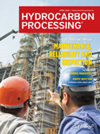Measure and predict torsional vibration in rotating equipment
Excessive torsional vibration in rotating equipment trains can result in damage to, or failure of, equipment, leading to emergency shutdowns and costly downtime.
IP: 3.145.93.210
The Authors
Pettinato, B. - Elliott Group, Jeannette, Pennsylvania
Brian Pettinato is Manager of product development for Elliott Group, where he has worked since 1995. His primary area of expertise is machinery dynamics. He has co-authored more than 20 technical papers, and holds three US patents. Mr. Pettinato is an ASME fellow, a member of STLE, and a registered Professional Engineer in the State of Pennsylvania. He also serves on the Turbomachinery Advisory Committee of Texas A&M and on the API 684 rotordynamics task force. He earned his BS and MS degrees in mechanical engineering from the University of Virginia.
Wang, Q. - Elliott Group, Jeannette, Pennsylvia
Qingyo Wang is a Senior Product Development Engineer at Elliott Group. He has been with Elliott Group since 2005, and his areas of expertise include lateral and torsional rotordynamics. Dr. Wang serves on the API 684 rotordynamics task force, and is a member of ASME. He received his BS and MS degrees in mechanical engineering from Tsinghua University in Beijing, China and his PhD in mechanical engineering from the University of Virginia.
Related Articles
From the Archive








Comments